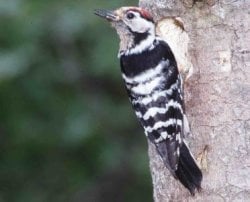BTO 1953-73: The last few Wrynecks and the first national bird atlas
CBC 1961-2000
Common Birds Census in 1961
First Atlas 1968-72
Following a lot of discussion at committees, the BTO decided to tackle what many people considered would be an impossible task – to visit every part of Britain & Ireland in the breeding season, in order to establish which birds were where and, where possible, to confirm breeding. This Atlas formed the basis of the first definitive distribution maps of the birds of these islands. Without this set of maps, we would not have evidence of the huge losses in farmland bird numbers that would take place over the next twenty years. Birdwatchers today are very grateful to this ‘can do’ generation who wanted to count and map birds, just to learn more.
Comings and goings
The second twenty-year period of the BTO was quite species-focused.The archives tell the sad tale of the Wryneck, in a survey covering the period 1954-58, but the happier story of the arrival of Little Ringed Plovers, that found gravel-pit sites very much to their liking. Other survey species included Nightjars, Mute Swans, Black-headed Gulls, urban Starlings and Great Black-backed Gulls. We guess that people who volunteered for the 1954-56 Buzzard Survey would be astounded by the current distribution, as revealed in Bird Atlas 2007-11. Opportunities were taken to collect all sorts of data, on topics such as the seawards migration of Swifts and on the locations of Treecreeper roosts in the soft bark of Wellingtonia trees. Learn more about past surveys here.
Inland Observation Points 1962-65
Most birdwatchers today will assume that BirdTrack is a new idea. The technology might be but, over the period 1962 to 1965, a group of BTO volunteers collected similar lists for the Inland Observation Point survey. There was already a strong, coastal bird observatory community but here was a way to collect complementary information closer to home. These data are currently being analysed alongside on-line BirdTrack data, to look at changes in the timing of spring and autumn migration. At the time IOP forms were filled in the BTO did not have the computer power to tackle this huge data-set but volunteers have now computerised the information.
Bird ringing
As mist nets became available, so the potential to study more species was opened up; now they could be caught anywhere, and not just at a coastal migration site in Heligoland traps. The number of ringers grew and they took on new projects, such as the Sand Martin enquiry. “In the autumn of 1958 a small team of ringers in Metropolitan Essex trapped nearly a thousand migrant Sand Martins as they passed along a narrow insignificant river bordering an urban sewage farm”, wrote Robert Hudson in Bird Study. By 1968, the Sand Martin total had increased by 421,700 birds. This old poster tells the story.
The Severn Barrage is not new
As Britain developed, so pressures were put on the invaluable estuaries around the country. Here was space that could be used for electricity generation (yes – 50 years ago), industrial development, reclaimed for agriculture or engineered to create fresh water reservoirs. The Birds of Estuaries Enquiry began in 1969, as a joint BTO and RSPB project. Birdwatchers knew that estuaries were important but now they had hard numbers, revealing just how many waders and other birds were dependent upon sites such as The Wash and Morecambe Bay. In 1993, the BoEE was broadened to integrate coastal and inland counts – the Wetland Bird Survey was born, with the help of JNCC and WWT.
- BTO 1933-53: From Great Crested Grebes to milk-bottle tops
- BTO 1953-73: The last few Wrynecks and the first national bird atlas
- BTO 1973-93: Support for SSSIs and two atlases
- BTO 1993-13: Garden BirdWatch to satellite tracking
- BTO 2013-33: Space for birds on these crowded islands?









Share this page